Structures in C Programming
Concept Map
Structures in C programming are essential for organizing complex data, allowing variables of different types to be grouped together. They enable the creation of nested structures, arrays of structures, and dynamic data structures such as linked lists, stacks, and queues. Advanced concepts like unions, enums, and bitfields further enhance memory optimization and code clarity. Understanding these elements is key for developers to effectively use structures in C.
Summary
Outline
Understanding Structures in C Programming
In the C programming language, structures, or `structs`, serve as composite data types that allow the grouping of variables of potentially different types into a single logical entity. A structure is defined with the `struct` keyword, followed by a structure name and a block containing the structure's members, each with a designated type, enclosed in braces. For instance, a `struct` for a student record might encapsulate an integer for the student ID, a character array for the name, and a float for the GPA. Structures are instantiated by declaring a variable of the defined structure type, and they can be initialized with specific values for each member. Members of a structure are accessed and modified using the dot operator, which provides a means to interact with individual elements or the entire structure as a unit.Nested Structures and Arrays of Structures
C programming supports the concept of nested structures, where one structure can contain another structure as a member. This feature is instrumental in modeling hierarchical or complex relationships, such as embedding an address structure within an employee structure to represent an employee's contact details. Accessing elements within a nested structure requires a chain of dot operators. Furthermore, C allows the creation of arrays of structures, analogous to arrays of basic types, to manage multiple instances of a structure type collectively. These arrays facilitate the storage and handling of a series of structured elements, and they are manipulated using standard array indexing combined with the dot operator to access individual members. Such arrays enable operations like assignment, retrieval, and iteration over collections of structured data using familiar array and structure syntax.Dynamic Data Structures: Linked Lists, Stacks, and Queues
C extends its data structuring capabilities to dynamic data structures such as linked lists, stacks, and queues, which offer more versatile memory management compared to static arrays. A linked list is composed of nodes, each containing data and a pointer to the next node, which allows for efficient insertion and deletion operations. Stacks and queues are abstract data types that adhere to specific item removal policies: Last In First Out (LIFO) for stacks and First In First Out (FIFO) for queues. These structures can be implemented with either arrays or linked lists, and they include operations like push (add), pop (remove), and peek, which are designed to conform to their respective data handling protocols.Initializing and Manipulating Structures with Functions and Pointers
Proper initialization of structures is essential to prevent undefined behavior due to uninitialized members. Structures can be initialized using designated initializers or by directly setting values to each member. When copying structures, the assignment operator performs a shallow copy, which may not be suitable for structures containing pointers. Functions in C can receive structures as arguments and return them, promoting code modularity and reuse. Passing structures by value copies the entire structure, while passing by reference using pointers is more efficient for larger structures. Pointers to structures are crucial for accessing members and for dynamic memory allocation, which is vital for creating and managing structures during program execution.Advanced Usage of Structures: Unions, Enums, and Bitfields
Advanced structure-related concepts in C include unions, enums, and bitfields. Unions are special data types that allow the storage of different types in the same memory location, providing a means for memory-efficient storage of variables that are mutually exclusive. Enums, or enumerations, are used within structures to define a set of named integer constants, enhancing code readability and maintainability. Bitfields enable the allocation of a specific number of bits to structure members, optimizing memory for small-sized fields. These advanced features offer benefits such as memory conservation and clearer code, but they also necessitate a thorough understanding of their distinct properties and potential limitations.Key Takeaways on Structures in C
In conclusion, structures in C are powerful constructs for organizing and managing diverse data types. They enable the creation of nested and arrayed structures, as well as dynamic data structures like linked lists, stacks, and queues, catering to a wide range of programming requirements. The use of functions and pointers with structures enhances their manipulation and efficiency. Advanced features such as unions, enums, and bitfields provide additional capabilities for memory optimization and code clarity. Mastery of these elements is crucial for developers seeking to leverage the full potential of structures in C for effective and sophisticated programming.Show More
Definition and Purpose of Structures
Composite Data Types
Structures in C allow for the grouping of variables of different types into a single entity
Structure Syntax
Structure Definition
Structures are defined using the `struct` keyword, followed by a name and a block of members
Structure Instantiation and Initialization
Structures are instantiated by declaring a variable of the defined type and can be initialized with specific values for each member
Accessing and Modifying Structure Members
Structure members can be accessed and modified using the dot operator
Advanced Structure Concepts
Nested Structures
C supports nested structures, allowing one structure to contain another as a member
Arrays of Structures
C allows for the creation of arrays of structures, facilitating the storage and handling of multiple instances of a structure type
Dynamic Data Structures
Linked Lists
Linked lists are composed of nodes and allow for efficient insertion and deletion operations
Stacks and Queues
Stacks and queues are abstract data types that adhere to specific item removal policies and can be implemented with arrays or linked lists
Proper Usage and Functionality of Structures
Initialization and Copying
Proper initialization of structures is crucial to prevent undefined behavior, and copying structures may require special consideration for structures containing pointers
Functions and Pointers with Structures
Functions and pointers enhance the manipulation and efficiency of structures
Advanced Features
Unions
Unions allow for the storage of different types in the same memory location
Enums
Enums are used to define a set of named integer constants within structures
Bitfields
Bitfields optimize memory for small-sized structure members





